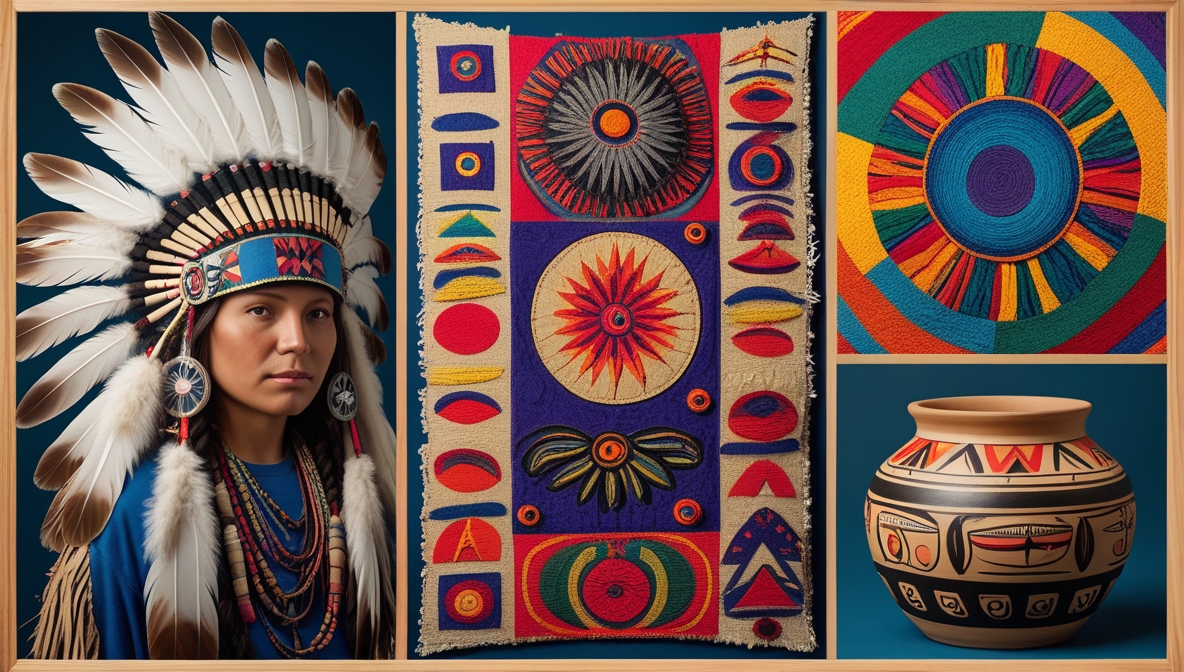Indigenous and folk art is alive and thriving in Iowa’s Creative Corridor. From handwoven textiles to ancestral drumming circles, these art forms continue to shape local identity, deepen community ties, and enrich public culture.
Folk and Indigenous art is more than decoration. It preserves oral traditions, shares community values, and offers intergenerational knowledge. These expressions are rooted in land, language, and ceremony. They aren’t trends—they are testaments.
Where Culture Lives: Local Highlights
1. Meskwaki Nation Artists
The Meskwaki Settlement near Tama is home to talented painters, basket makers, and beadworkers. Artists like Alex Walker use traditional techniques in new ways, honoring family stories while creating contemporary visuals. Their works often appear in local galleries and educational spaces.
2. Czech Village & Slovak Museum and Library (Cedar Rapids)
Not all folk art comes from centuries past. The Czech & Slovak Museum curates folk costumes, egg decoration (kraslice), puppetry, and woodcarving workshops that speak to heritage still practiced today. Seasonal events feature artisan demonstrations that involve hands-on participation.
3. Iowa City’s Public Murals
Public murals like “The People’s Wall” blend contemporary expression with symbols drawn from Native stories and folklore. Indigenous artists have incorporated imagery like the turtle, the medicine wheel, and corn as living metaphors, turning concrete into cultural storytelling.
4. Marion’s Swamp Fox Festival
Beyond the parade and music, this event supports local artisans who specialize in Appalachian quilt traditions, Hmong embroidery, and Anishinaabe-inspired pottery. It’s one of the few community events that brings folk artists into direct contact with new generations.
Traditions Passed Through Hands
Artistic heritage isn’t static—it’s practiced. Here are forms still actively sustained:
- Beadwork: Intricate patterns passed down by Lakota and Meskwaki elders often represent familial or spiritual connections. Each color choice carries purpose.
- Drum-Making: Used in ceremony and social gatherings, these drums are handmade from natural materials and often involve collective construction.
- Embroidery: Czech, Hmong, and Scandinavian communities pass on stitching techniques through festivals and church groups.
- Story Quilts: African-American quilters across Eastern Iowa use fabrics to encode family history, Civil Rights struggles, and migration stories.
- Wood Carving: Nordic rosemaling and Slovak relief carving decorate both tools and public architecture.
Workshops and Residencies That Support Continuity
Many artists teach workshops or serve as cultural liaisons in schools. Here are some key initiatives:
- Iowa Folklife Program: Facilitates apprenticeships between master artists and young learners.
- The Englert Theatre’s “Strength Through Stories” Series: Brings Indigenous and folk artists into collaborative performances.
- Public Space One’s “Rural Futurism” Program: Hosts residencies for artists practicing cultural preservation through craft.
- The UI Pentacrest Museums: Frequently partner with Native communities to host seasonal arts and language events.
Why Artists Keep Creating
These artists aren’t preserving the past—they’re practicing the present. Their work responds to land treaties, diaspora, language loss, and revival. Their art teaches, honors, warns, invites, and adapts. Whether it’s a clay pot patterned with clan symbols or a modern dance built on powwow footwork, the message is clear: culture lives through practice.
How to Support the Artists
- Attend local art markets featuring Indigenous and folk vendors
- Buy directly from artists rather than through resellers
- Support local museums and galleries featuring cultural exhibits
- Participate in community craft workshops
- Share and respect the context of the art when posting online
Indigenous and folk artists in the Creative Corridor are not just preserving—they are continuing. Their work stitches Iowa’s past into its future, thread by thread, beat by beat.
